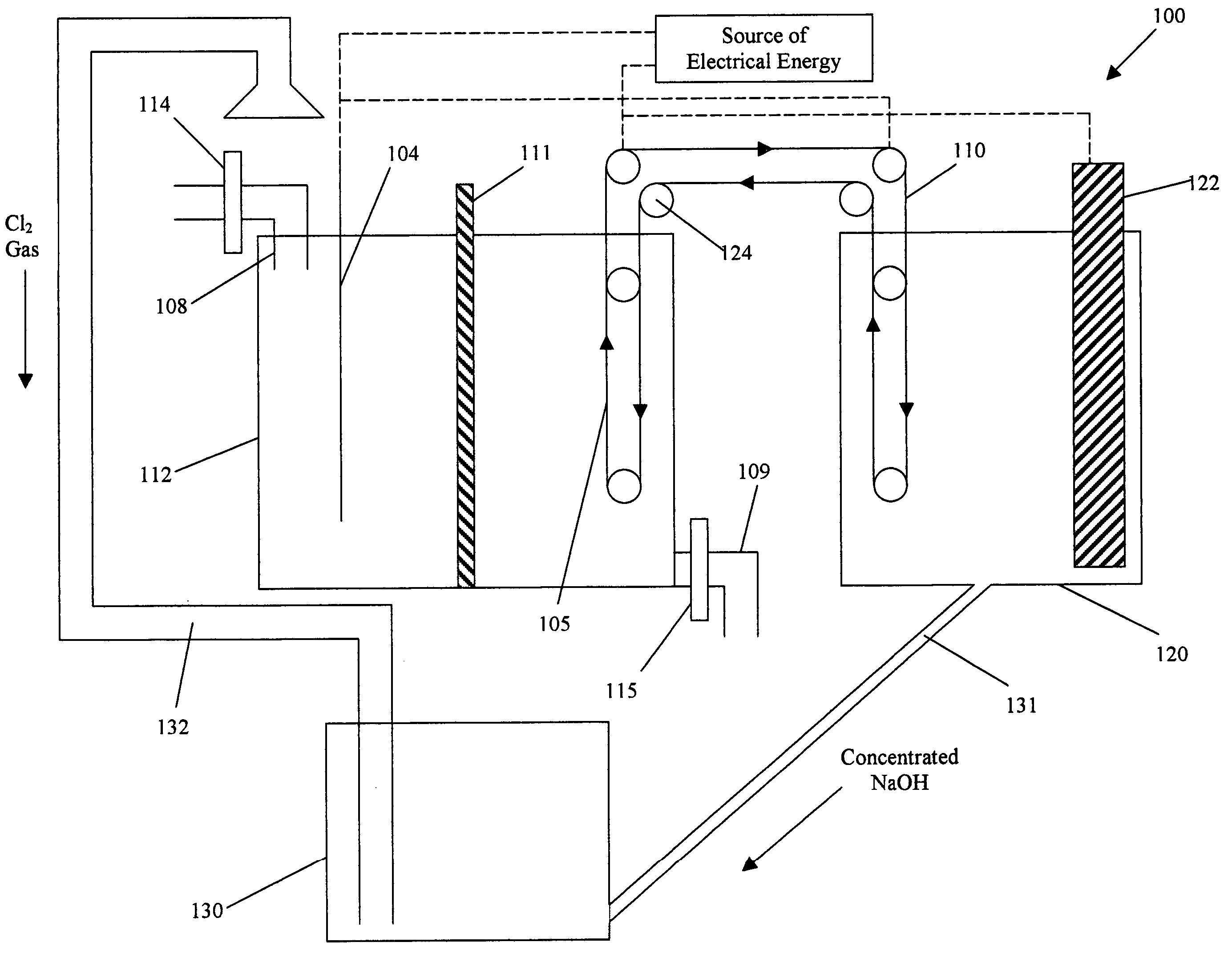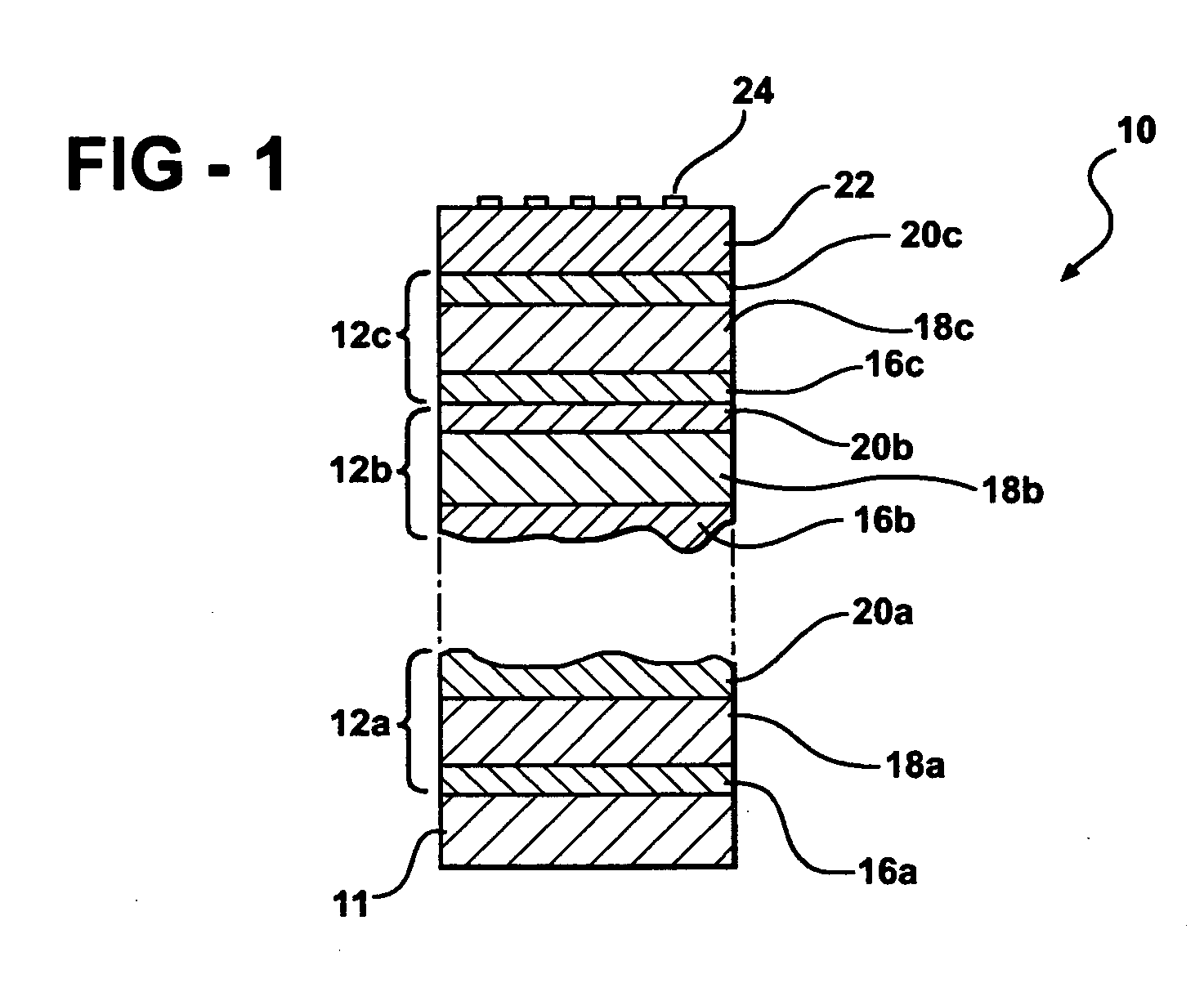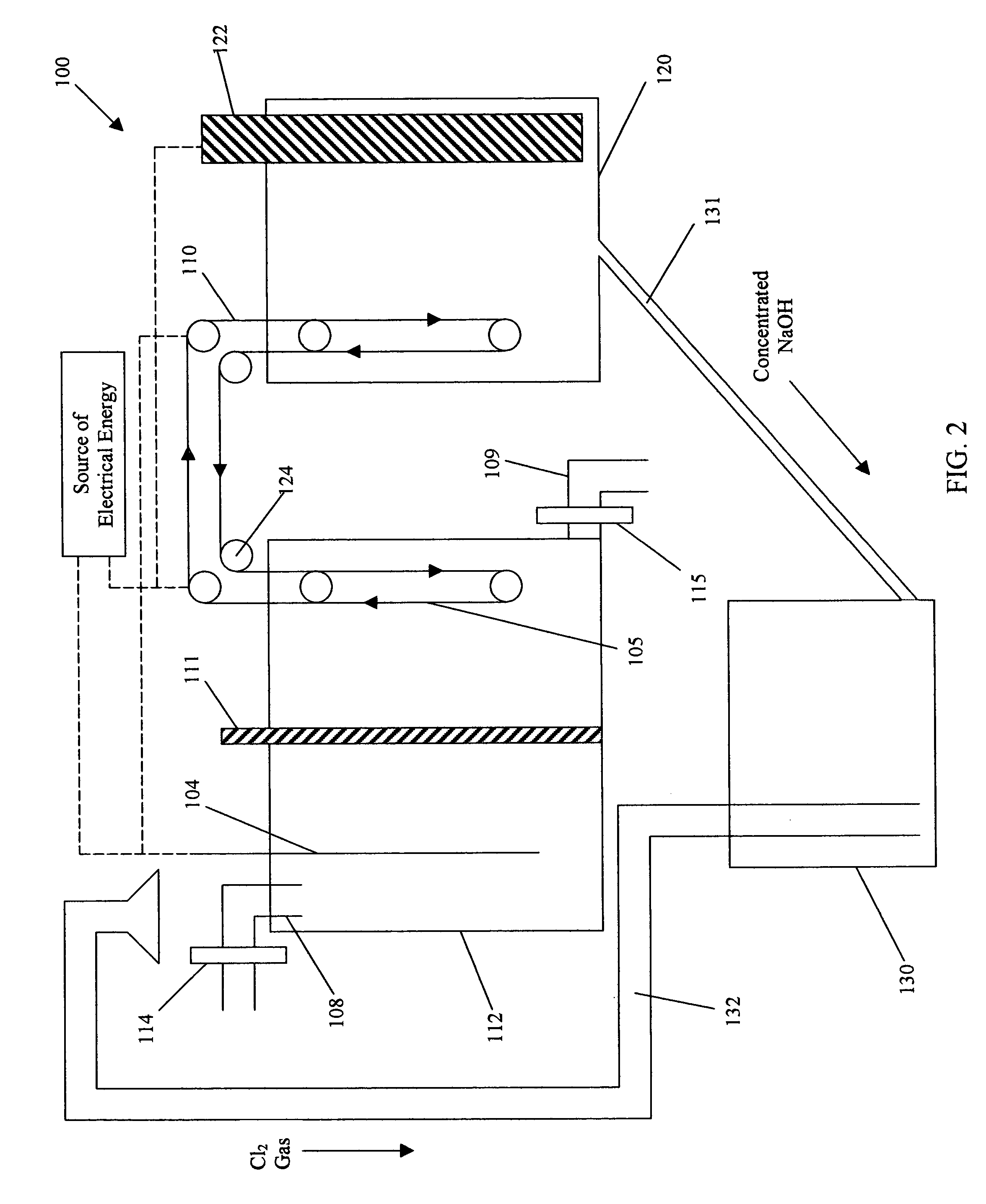Process and apparatus for removing chloride and sodium ions from an aqueous sodium chloride solution
a technology of sodium ions and aqueous sodium chloride, which is applied in the direction of electrochemical generators, instruments, energy input, etc., can solve the problems of developing countries suffering, shortening the fresh water supply in the world, and it is unlikely that the world will meet the growing water needs alone. , to achieve the effect of reducing the salt conten
- Summary
- Abstract
- Description
- Claims
- Application Information
AI Technical Summary
Benefits of technology
Problems solved by technology
Method used
Image
Examples
Embodiment Construction
[0035] An illustration of an apparatus, generally referred to as 100, for the production of sodium hypochlorite (NaOCl) power and aqueous hydrogen chloride having a lower concentration of hydrogen chloride than the original source is presented in FIG. 2. A preferred embodiment of the instant invention utilizes a renewable source of solar energy, sunlight, to effect the formation of sodium hypochlorite (NaOCl), power and aqueous hydrogen chloride having a lower concentration of hydrogen chloride than the original source. Although sunlight is the preferred source of energy, the electric potential may be supplied by any source of power, such as a generator powered by coal, natural gas or other fossil fuels. Sunlight is collected by a photovoltaic device 102 and converted to electrical energy that is used to produce an electrical potential across electrodes 104 and 105, which induces the electrolysis of sodium chloride (NaCl). The aqueous sodium chloride solution may be brine. The brine...
PUM
| Property | Measurement | Unit |
|---|---|---|
| pressures | aaaaa | aaaaa |
| thickness | aaaaa | aaaaa |
| thickness | aaaaa | aaaaa |
Abstract
Description
Claims
Application Information
 Login to View More
Login to View More - R&D
- Intellectual Property
- Life Sciences
- Materials
- Tech Scout
- Unparalleled Data Quality
- Higher Quality Content
- 60% Fewer Hallucinations
Browse by: Latest US Patents, China's latest patents, Technical Efficacy Thesaurus, Application Domain, Technology Topic, Popular Technical Reports.
© 2025 PatSnap. All rights reserved.Legal|Privacy policy|Modern Slavery Act Transparency Statement|Sitemap|About US| Contact US: help@patsnap.com



